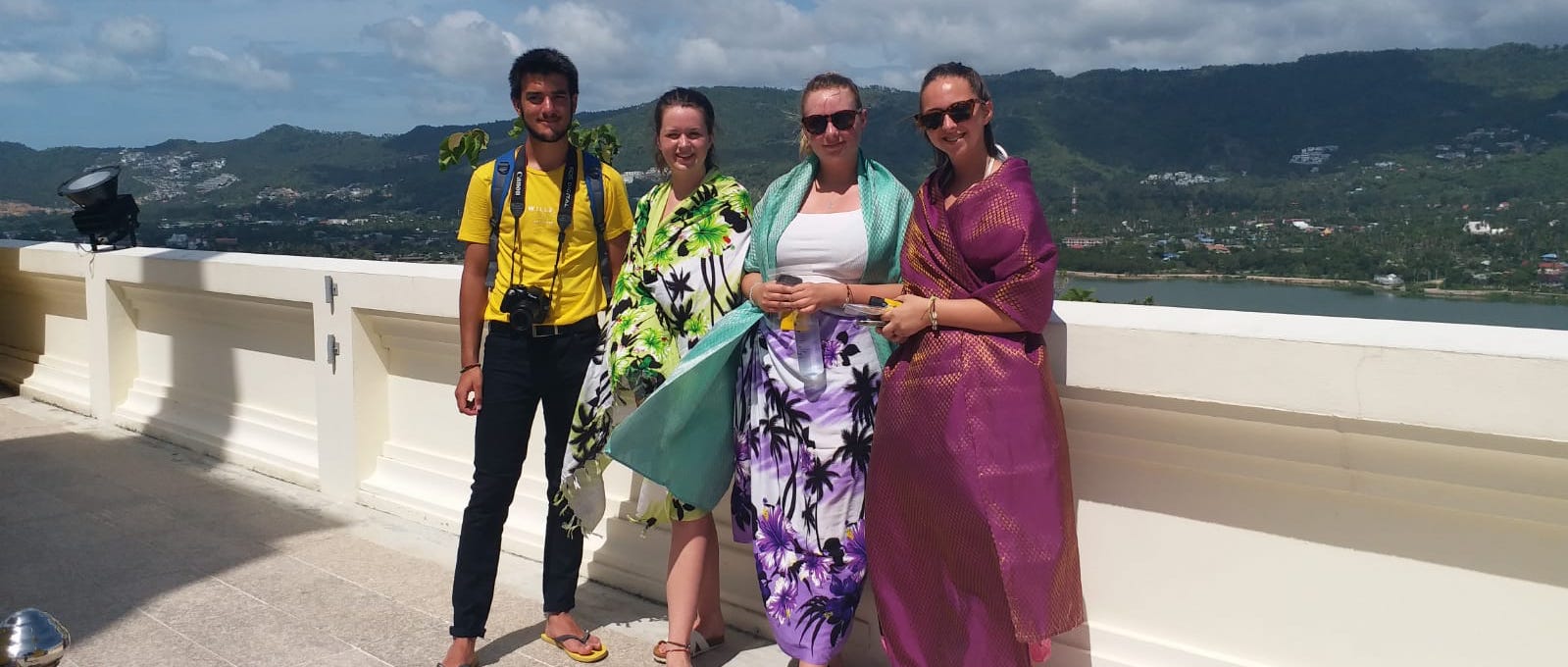The ultimate overseas volunteering packing list
by juliette capomolla
Once you've booked your volunteering trip, it's time to start planning and preparing to go! One of the biggest things you'll need to think about it what to take with you. You probably have lots of questions you want answered like what should you wear whilst volunteering, are there cultural differences in what clothing is appropriate and what the weather will be like, which is why we've written this blog post!
Everyday Wear
In terms of your everyday wear, you want to keep in mind that you might be doing some forms of labour, but you also might be teaching. There is a large variety of activities that you could be doing, so you want to be prepared for all of them.
It is extremely important that you are culturally sensitive with what you wear. For this, we have a dress code that ensures your shoulders and knees are covered at all times. If you’re working somewhere warm or humid, it is a good idea to wear light fabrics like linen and cotton so that you do not get too hot. It is also important to wear loose clothing, as tight-fitted clothing can also be culturally insensitive and inappropriate when working with school children.
The weather in your destination is also a key factor in choosing your everyday volunteering wear. Destinations like Thailand and Cambodia are basically always hot. If it’s the rainy season (Australian winter), it’s highly recommended that you bring a light rain jacket so that we can continue on with our volunteering no matter what!
However if you’re travelling to India, Nepal or Peru in our Australian summer, it can get very cold at night because it is their cooler season, so it is important to pack appropriately. Often our volunteers will be in jumpers and pants in these seasons.
For the cold weather, you might also like to bring:
- A beanie
- A warm jacket
- Thermals for the nights
- Gloves
Destination-specific
Some of our trips and some of our destinations require particular clothing. So, if you are on one of these trips, make sure you pay close attention!
If you have chosen to add an extension trip to Machu Picchu or to the Annapurna Ranges, you are going to spend a bit of time walking. To make sure that you're comfortable and enjoy every bit of it, you'll want to get yourself some walking shoes. Just make sure that you wear them in before you go so you don't get any blisters on the trek! If you aren’t an avid hiker, you can also rent these from places like Outsports or other outdoors shops. This is a much cheaper option if you only plan to use them this one time. Again, make sure they’re worn in, otherwise your trek is going to be a bit more unpleasant. You should also consider bringing some tape, strapping and/or band-aids in case of blisters and injuries.
If you’re just generally travelling to Nepal, we highly recommend that you bring a face mask. Unfortunately, Kathmandu is an extremely polluted city. A face mask can protect you from a lot of bad air particles and make your experience just generally more pleasant. Of course, if you don’t feel like you need it, you don’t need to wear it. However, we highly recommend packing one just in case!
Luggage
In terms of your luggage, we recommend that in addition to your normal suitcase or pack, you also bring a backpack. This is for your everyday volunteering, travelling to and from the site. You will need to bring with you a water bottle, some snacks if you wish and your personal first-aid supplies. Additionally, this can serve as a great overnight bag if you choose to go away on your weekends. It’s an easier way to travel than carrying your big suitcase or pack and everything you brought!
Whilst travelling, it might also be a good idea to bring along a bum bag so that you can keep your cash and other valuables as close to you as possible. When you go into bustling cities like Siem Reap or Chiang Mai, it might make you feel more comfortable and safer if you use a bum bag instead of something like a backpack.
Hygiene and Safety
We recommend that you purchase a local sim card when you arrive at your destination. This is so that, in case of an emergency or any other needs, you are able to contact the in-country team and your fellow volunteers. We want to ensure your safety and be as helpful and useful as we can, so it is important that you are able to contact us as you require. In saying this, this also only works if you’ve saved our contact details in your phone, so make sure you do that!
You should also make sure that you have your own first-aid kit easily accessible while you're volunteering. On top of any important medicine you might need, you should have the following in your kit:
- Hand sanitiser
- Toilet paper
- Tissues
- Band-aids
- Paracetamol
- Insect repellent
You should also make sure you have copies of all your important documents that you keep in a safe place in the volunteer house in case you lose any of your important personal documentation or valuables. You should make sure that you have:
- Copy of important documents – passport, travel insurance, bank cards
- Emergency contact details – both our in-country team and your own personal emergency contact
When you’re volunteering abroad, it’s really important to remember that the culture, environment and climate are going to be very different to your own. The best way to make this transition as seamless as possible is to have the right supplies. So packing responsibly and carefully is key. Hopefully, with the help of this list, you will be able to jump right into your volunteering adventure feeling comfortable and excited!





